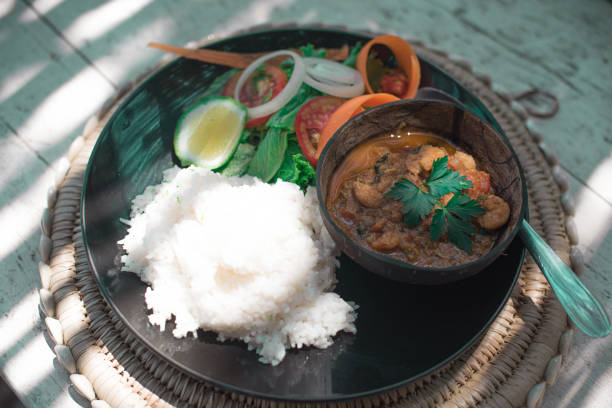Introduction: How rice became a staple in Mozambican cuisine
Mozambique is a country located in Southeast Africa with a rich cultural heritage and diverse cuisine. Rice is a staple food in Mozambique and is consumed by the majority of the population. Its cultivation in Mozambique dates back to the 16th century and has now become an integral part of the country’s cuisine. The Portuguese introduced rice to Mozambique, and it became popular due to its versatility and nutritional value.
The cultural significance of rice in Mozambique
Rice plays an essential role in Mozambique’s culture and traditions. It is a symbol of hospitality and is often served during special occasions like weddings, funerals, and religious ceremonies. In rural areas, rice is shared among neighbors, and it is believed to bring good luck and prosperity. In some regions of Mozambique, rice is also used in traditional medicine to treat various ailments. The cultural significance of rice in Mozambique is evident in its use in many traditional dishes.
Rice-based dishes that define Mozambican gastronomy
Rice is the main ingredient in many Mozambican dishes, and it is often cooked with spices, vegetables, and meat or fish. One of the most popular dishes in Mozambique is Matapa, which is made with cassava leaves, ground peanuts, coconut milk, and rice. Another popular dish is Xima, which is a thick porridge made from maize or cassava flour and served with rice and various stews. Rice is also used in popular Mozambican dishes like Piri-piri chicken, Mozambican fish stew, and Mozambican rice and beans. These dishes showcase the versatility of rice in Mozambican cuisine.
Rice as a source of nutrition for Mozambicans
Rice is an essential source of nutrition for many Mozambicans, especially those living in rural areas. It provides a significant amount of carbohydrates, protein, and other nutrients that are required for a balanced diet. Rice is also easy to digest and is a good source of energy. In Mozambique, rice is often consumed with other nutrient-rich foods like vegetables, meat, and fish.
The role of rice in Mozambique’s agricultural economy
Rice cultivation is vital to Mozambique’s agricultural economy and provides employment to many rural farmers. It is estimated that rice cultivation employs over 150,000 people in Mozambique and contributes significantly to the country’s GDP. The Mozambican government has implemented policies to encourage rice production and processing to increase the country’s food security and reduce poverty.
Challenges facing the production and consumption of rice in Mozambique
Despite its importance, Mozambique faces several challenges in the production and consumption of rice. These challenges include poor infrastructure, limited access to credit, climate change, and pests and diseases. These factors affect rice production and reduce the quality and quantity of the crop. Additionally, the high cost of rice can make it unaffordable for many Mozambicans, especially those living in poverty. The Mozambican government is working to address these challenges by implementing policies to increase rice production, improve infrastructure, and provide access to credit for farmers.

